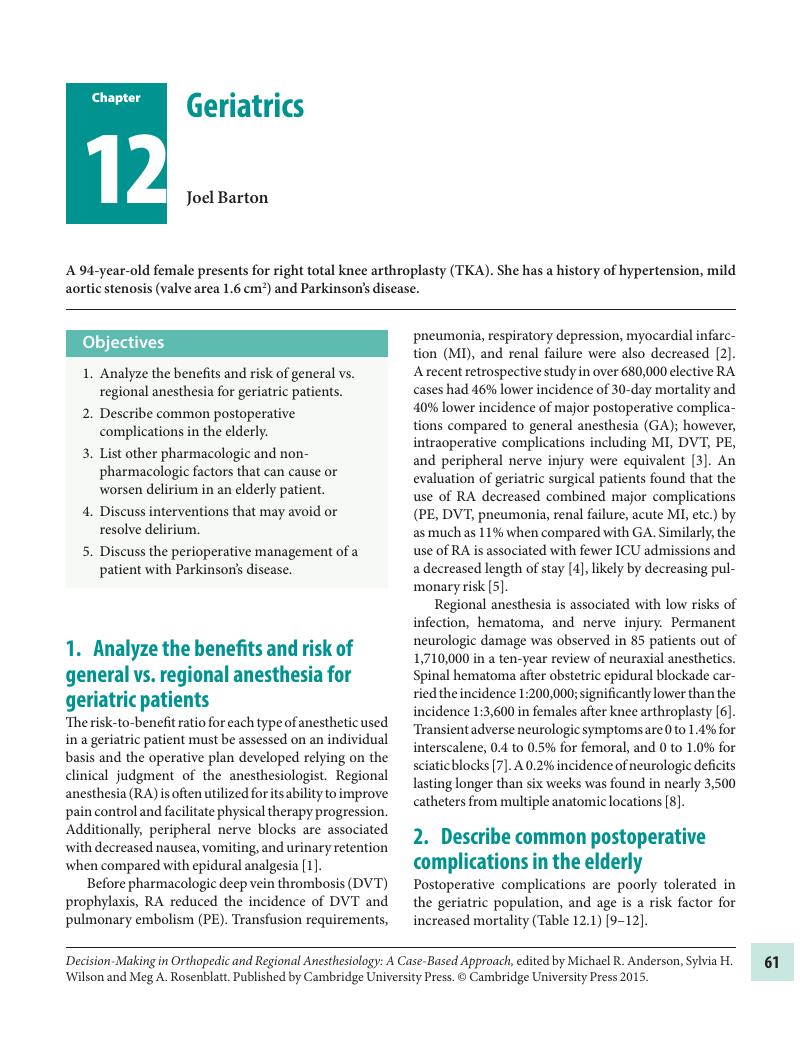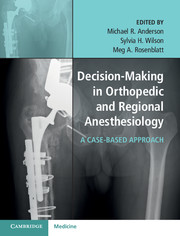Book contents
- Decision-Making in Orthopedic and Regional AnesthesiologyA Case-Based Approach
- Decision-Making in Orthopedic and Regional Anesthesiology
- Copyright page
- Contents
- List of contributors
- Preface
- Section 1 General considerations in regional anesthesia
- Section 2 Special patient considerations
- Chapter 9 Anticoagulation
- Chapter 10 Skeletal abnormalities
- Chapter 11 Underlying neuropathy
- Chapter 12 Geriatrics
- Chapter 13 Obesity
- Chapter 14 Pediatrics
- Chapter 15 Pregnancy and lactation
- Chapter 16 Cancer pain
- Chapter 17 Neuraxial anesthesia following spine procedures
- Section 3 Total joint replacements
- Section 4 Orthopedic trauma
- Section 5 Sports medicine and hand surgery
- Index
- References
Chapter 12 - Geriatrics
from Section 2 - Special patient considerations
Published online by Cambridge University Press: 05 October 2015
- Decision-Making in Orthopedic and Regional AnesthesiologyA Case-Based Approach
- Decision-Making in Orthopedic and Regional Anesthesiology
- Copyright page
- Contents
- List of contributors
- Preface
- Section 1 General considerations in regional anesthesia
- Section 2 Special patient considerations
- Chapter 9 Anticoagulation
- Chapter 10 Skeletal abnormalities
- Chapter 11 Underlying neuropathy
- Chapter 12 Geriatrics
- Chapter 13 Obesity
- Chapter 14 Pediatrics
- Chapter 15 Pregnancy and lactation
- Chapter 16 Cancer pain
- Chapter 17 Neuraxial anesthesia following spine procedures
- Section 3 Total joint replacements
- Section 4 Orthopedic trauma
- Section 5 Sports medicine and hand surgery
- Index
- References
Summary

- Type
- Chapter
- Information
- Decision-Making in Orthopedic and Regional AnesthesiologyA Case-Based Approach, pp. 61 - 67Publisher: Cambridge University PressPrint publication year: 2015



